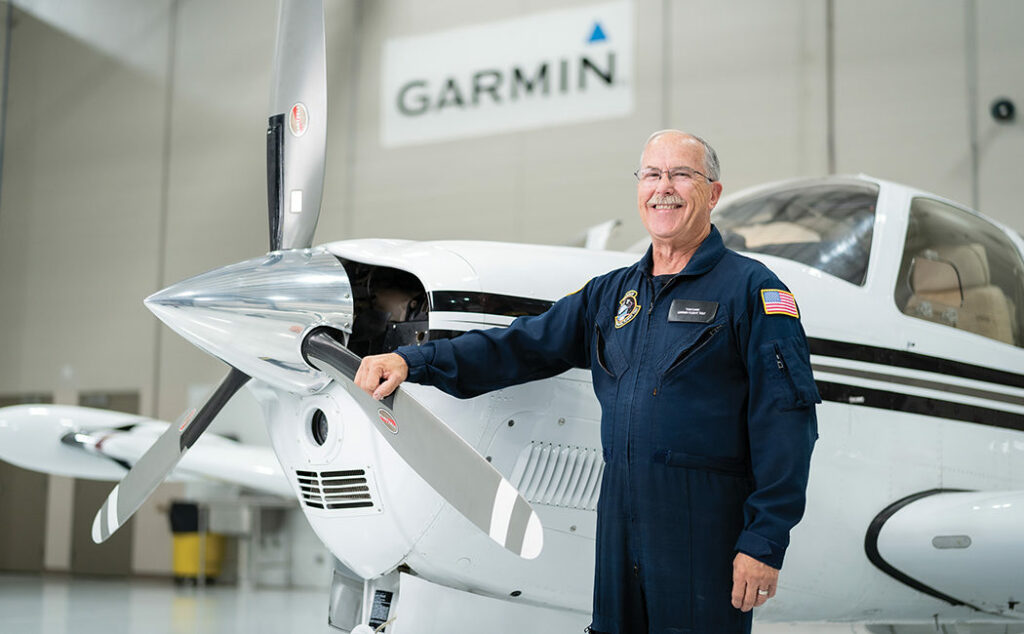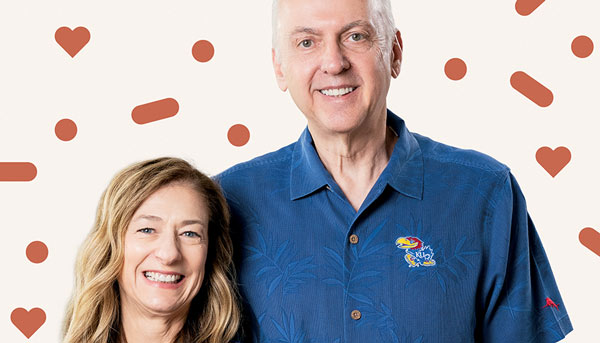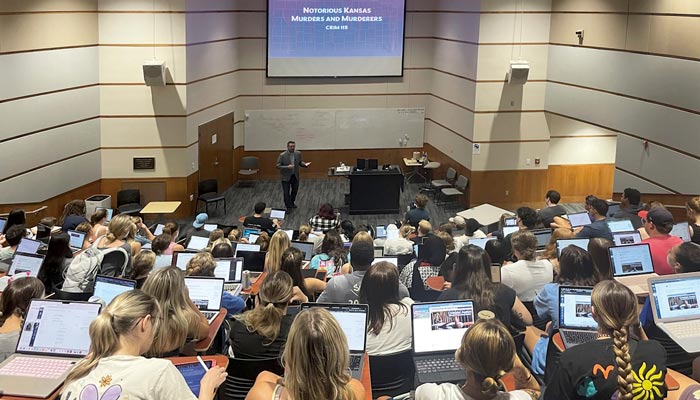Garmin pilot lauded for flight tests on automated landing system
Carr proves airworthiness of Garmin's next generation in aviation safety
Garmin Ltd. recently unveiled a radical change in the future of aviation, hatched at its Olathe headquarters; few of us who live and work outside the business of flying even took notice, and it is Tom Carr’s sincere hope that few ever will.
That’s because Autoland, the world’s first certified system designed to assume complete control of an aircraft in distress, all the way from high-altitude flight to landing and engine shutdown, activates only when pilots are incapacitated and all aboard the aircraft face imminent peril.
“The only time it’s meant to be used,” says Carr, e’77, Garmin’s chief test pilot and director of flight operations, “is when there’s nobody left to land the airplane.”

Industry praise for Autoland was swift, with the National Aeronautic Association (NAA) awarding Garmin’s Autoland team the Robert J. Collier Trophy in recognition of “the greatest achievement in aeronautics or astronautics in America”—Autoland, said NAA Chairman Jim Albaugh, “will save many lives in the future”—and the Society of Experimental Test Pilots awarded Carr its Iven C. Kincheloe Award for “outstanding professional accomplishment in the conduct of flight testing.”
Carr was honored for his Autoland certification flights, including hundreds of approaches and fully automated landings. With more than 5,000 hours as pilot in command on experimental flight tests for Garmin and, earlier in his career, Wichita’s Beech Aircraft and Raytheon Aircraft, Carr descibes his work on Autoland and the Kincheloe Award as “kind of the pinnacle of my career.” He quickly adds, “And we’re just as proud of the team award.”
Carr dreamed of flying while growing up in Washington, D.C., yet the only airport he could reach by bus or bike was Washington National (now Reagan National)—hardly a welcoming environment for a “prototypical airport rat.” But he happily made do, spending weekends watching big planes come and go, hanging around the general aviation terminal and paying premium landing fees when he began his flight training.
“I may be the only person I know,” Carr says with a chuckle, “who started his flying career at Washington National Airport.”
He had family in Kansas, so Carr came to Mount Oread to study aeronautical engineering “at the best aero school around,” hoping to one day become an airline pilot. He joined Beech after graduation, in part to make himself more attractive to airlines by boosting his flight hours, but when he made his way to flight test after spending one year as a control systems design engineer, Carr knew he’d found his niche.
“It’s more interesting than airline flying, to me,” he says, “so I started down the path toward a career in flight test.”
Carr explains that flight test consists of two varieties: production flight test, confirming airworthiness when planes exit the assembly line; and experimental, or engineering, flight test, in which pilots push new products and designs through performance expectations. “It’s a different ball game every day,” Carr says of his specialty, experimental flight test.
Carr’s broad interest in all forms of aviation, from gliders to jets, is so all-
consuming that he and his wife recently built a home in rural Leavenworth County with acreage for a grass airstrip; family trips are taken in family planes.
A system capable of landing such an aircraft in the event of a pilot emergency required that Garmin software engineers create routing algorithms capable of sorting through terrain, weather, wind and runway lengths at nearby airports. Automated throttles, all but unheard of for propeller-powered aircraft, had to be robust enough to work on aircraft from small prop planes to powerful jets, and the system also includes steering and braking once on the ground.
Garmin’s “human engineering” foresaw instructions for passengers on how to communicate with air-traffic controllers and, once safely stopped, open the aircraft door.
Autoland engages automatically should high-altitude hypoxia cause loss of consciousness among the flight crew—as with the 1999 private-jet crash that claimed the lives of golfer Payne Stewart and five others, and the 2005 downing of a Greek airliner that killed 121. Should the pilot suffer a heart attack or other medical emergency, a passenger can push one dedicated button to begin the safe conclusion of a terrifying event—a transformative leap in aircraft safety that Carr was the first to prove safe and effective.
“Essentially, this is what would be called a ‘digital parachute,’” Carr says, explaining that once activated, Autoland instantly transforms the cockpit environment with displays designed for passengers rather than pilots. “You really don’t expect to use it, but there’s some peace of mind in knowing that it’s there.”








